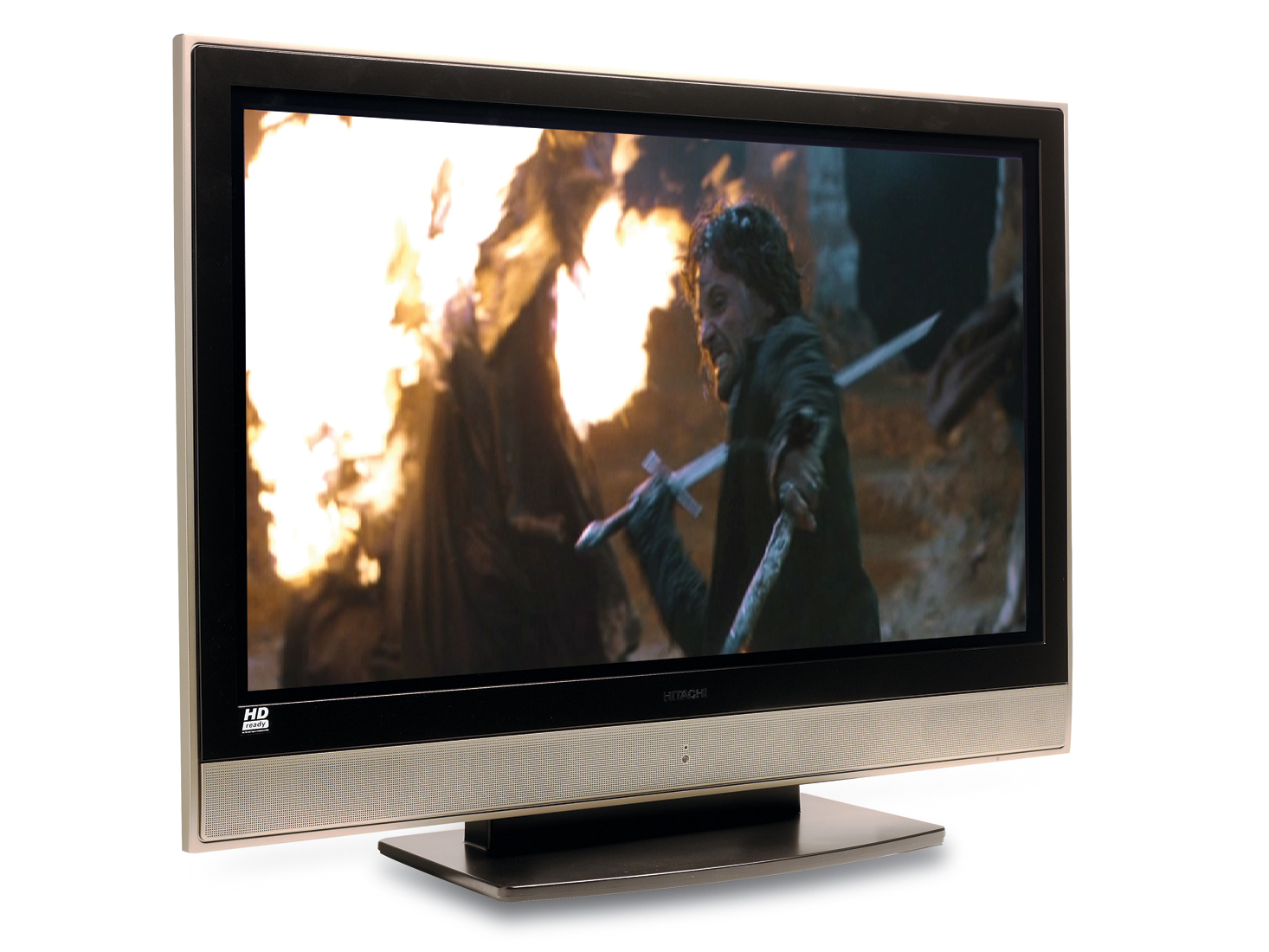TechRadar Verdict
Not bad value, but certainly not Hitachi's finest hour in performance terms
Pros
- +
Good colour and picture sharpness
Low price
Cons
- -
Quality concerns
Limited connections
Why you can trust TechRadar
Forget high-definition, what you really need is full high-definition - or so everyone seems to think. We're yet to be entirely convinced about the validity of this obsession with buying 1920 x 1080 screens over the more common 1366 x 768 or 1280 x 720 pixel models (there's very little you can watch to truly appreciate it anyway).
Hitachi probably doesn't mind the fad at all, though, since it means its new 42PD8600 has a good chance of selling by the boatload on account of its claims to offer 1080-line pictures for just £1,200.
Before you all rush out to buy one, though, we need to make something clear: the 42PD8600 doesn't have a 1920 x 1080 screen: it only gives 1024 x 1080. And even then, half of the rows aren't real.
Digital trickery
This is down to a technology called Alternate Lighting of Surfaces (ALiS), which shares an electrode between two rows of real pixels rather than giving each row an electrode of its own; fills the gap between the pixels with an expanded phosphor area; and then alternately powers the rows of pixels either side of the electrode so fast that the space between the pixel lines actually becomes part of the picture.
The net result of all these shenanigans is that while Hitachi is technically allowed to call its 42PD8600 a 'full HD' TV, a 1920 x 1080 source is still going to have to be processed and scaled considerably before it maps onto the Hitachi's real pixel count.
Still, while this means you're not going to get 1:1 pixel mapping of a full HD source to a full HD screen, it doesn't mean the 42PD8600 doesn't give a very good picture.
We should run a couple of other points by you. Connections cover the key HDMI and component HD options, and supports PCs. But one thing noticeably absent is a built-in digital tuner.
The 42PD8600's picture quality actually turns out to be slightly uninspiring. Two of the worst problems concern the TV's fallibility to two old plasma technology issues, we hoped were no more: fizzing noise over horizontal motion, especially where people's faces are concerned, and colours that look striped rather than smoothly blended. Both these flaws are particularly apparent during the opening scenes of The Fellowship of the Ring.
The moon above the entrance to the Mines of Moria seems to have jagged edges, and black levels aren't as profoundly black as would be ideal. Worst of all is the picture's tendency to look noisy, thanks to overt dot crawl and grain, even with hi-def footage.
In the plus column, the 42PD8600's picture is sensationally sharp, achieving a crispness and definition with detailed shots like those showing The Shire that's rarely seen in the plasma world. Maybe there's something to this ALiS malarkey after all!
Colours, too, are mostly very good apart from the striping; bright, rich, and naturally toned aside from the occasional slightly orange-looking red.
The 42PD8600 is a solid audio performer, meanwhile, making up for a slightly swallowed bass line with an open mid-range, believable vocal tones, and rich, harshness-free trebles.
Ultimately that little list of positives doesn't save the 42PD8600 from being an average plasma TV. Though we guess that even being average is probably just about fair enough for £1,200.
Tech.co.uk was the former name of TechRadar.com. Its staff were at the forefront of the digital publishing revolution, and spearheaded the move to bring consumer technology journalism to its natural home – online. Many of the current TechRadar staff started life a Tech.co.uk staff writer, covering everything from the emerging smartphone market to the evolving market of personal computers. Think of it as the building blocks of the TechRadar you love today.
